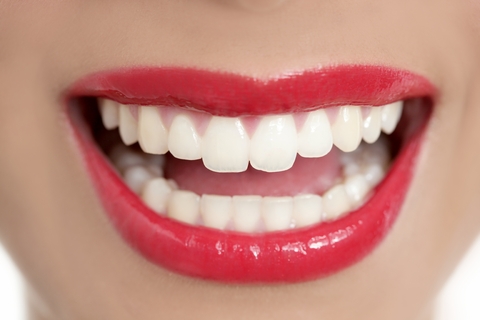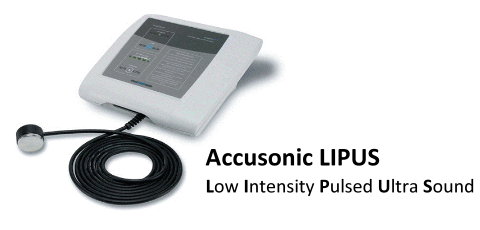 This article has nothing really to do with how to increase our height but it does have another very important function and utility. We will focus back on the Low Intensity Pulsed Ultrasound technology to see how it will work to regrow our teeth and maybe ever regenerate lost teeth.
This article has nothing really to do with how to increase our height but it does have another very important function and utility. We will focus back on the Low Intensity Pulsed Ultrasound technology to see how it will work to regrow our teeth and maybe ever regenerate lost teeth.
However, I have found a few links (like HERE) which claim that all you really need is a low frequency ultrasound source. You can’t get a high frequency ultrasound device legally unless you are a doctor. There is supposed to be a Novasonic device that can generate a sound vibration of 20,000 Hertz. If you touch the device to your skin, you can fell it working on the inside of the skin. There is also supposed to be a second type of device you can find on Ebay if you type in “ultrasound massager”. The link above says that they cost about $100-150. They are much more powerful and can generate sound vibrations of up to 3-5 mHz frequency. You put these device close to your teeth and gums every day and they massage your gums and teeth to help them become stronger and regenerate.
It is a little bad and the resource seems a little non-credible but from a badly designed Rex Research website found HERE, I copy and pasted the articles that have talked about the LIPUS technology for the use of teeth regeneration.
http://www.breitbart.com/news/2006/06/28/060628204537.2422eofv.html
http://news.yahoo.com/s/afp/20060628/wl_canada_afp/canadaussciencehealth&printer=1;_ylt=Ai0n21.IDNpv5KbEzjuV2Pz6OrgF;_ylu=X3oDMTA3MXN1bHE0BHNlYwN0bWE-
Wed Jun 28, 4:47 PM ET
Smile! A New Canadian Tool Can Regrow Teeth Say InventorsSnaggle-toothed hockey players and sugar lovers may soon rejoice as Canadian scientists said they have created the first device able to re-grow teeth and bones.
The researchers at the University of Alberta in Edmonton filed patents earlier this month in the United States for the tool based on low-intensity pulsed ultrasound technology after testing it on a dozen dental patients in Canada.
“Right now, we plan to use it to fix fractured or diseased teeth, as well as asymmetric jawbones, but it may also help hockey players or children who had their tooth knocked out,” Jie Chen, an engineering professor and nano-circuit design expert, told AFP.
Chen helped create the tiny ultrasound machine that gently massages gums and stimulates tooth growth from the root once inserted into a person’s mouth, mounted on braces or a removable plastic crown.
The wireless device, smaller than a pea, must be activated for 20 minutes each day for four months to stimulate growth, he said.
It can also stimulate jawbone growth to fix a person’s crooked smile and may eventually allow people to grow taller by stimulating bone growth, Chen said.
Tarek El-Bialy, a new member of the university’s dentistry faculty, first tested the low-intensity pulsed ultrasound treatment to repair dental tissue in rabbits in the late 1990s.
His research was published in the American Journal of Orthodontics and Dentofacial Orthopedics and later presented at the World Federation of Orthodontics in Paris in September 2005.
With the help of Chen and Ying Tsui, another engineering professor, the initial massive handheld device was shrunk to fit inside a person’s mouth.
It is still at the prototype stage, but the trio expects to commercialize it within two years, Chen said.
The bigger version has already received approvals from American and Canadian regulatory bodies, he noted.
Copyright © 2006 Agence France Presse. All rights reserved. The information contained in the AFP News report may not be published, broadcast, rewritten or redistributed without the prior written authority of Agence France Presse. // Copyright © 2006 Yahoo! Inc. All rights reserved.
http://myprofile.cos.com/telbialy
Tarek El-BailyUniversity of Alberta
Faculty of Medicine and Dentistry
Dentistry
Orthodontics
Associate Professor Appointed: 2005
Mailing Address:
University of Alberta, Graduate Orthodontic Program
Faculty of Medicine and Dentistry
4051 Dent/Pharm Bldg.
Edmonton, Alberta T6G 2N8
Canada
Contact Information
Phone: (780) 492-2751
Fax: (780) 492-1624
telbialy@ualberta.ca
http://www.uofaweb.ualberta.ca/ortho/nav02.cfm?nav02=10606&nav01=1
Profile Details: Last Updated: 6/20/2006 — COS Expertise ID #896844 — Reference this profile directly: http://myprofile.cos.com/telbialy
http://www.dent.ualberta.ca/nav02.cfm?nav02=47501&nav01=44192
Dr. Tarek El-Bialy, Dr. Jie Chen & Dr. Ying Tsui Awarded GrantCongratulations to Dr. Tarek El-Bialy and his team Dr. Jie Chen and Dr. Ying Tsui (from the Electrical Engineering department) who has recently been awarded with the NSERC (121) [Idea to Innovation] grant for “Intraoral Wireless Device for Dental Tissue Formation and Tooth-Root Healing”.
Moreover, Dr. Tarek El-Bialy has discovered that this ultrasound can stimulate lower jaw growth especially in patients with craniofacial problems like Hemifacial Microsomia. Usually these patients have to undergo many surgeries during their lives. This new device will be expected to improve many unsolved problems in Dentistry and Craniofacial areas. A provisional patent has been filed based on this research as well as the awarded grant. More details about this research can be found at the following website http://myprofile.cos.com/telbialy
For the second time in UA history, our research team has awarded an NSERC (I2I)[Idea to Innovation] grant to miniaturize a small ultrasound device for stimulating teeth healing and dental tissue formation. This team includes in addition to Dr. Tarek El-Bialy (in the Orthodontic Graduate program and Biomedical Engineering), Drs. Jie Chen and Ying Tsui from the Electrical Engineering department. When it was published by Dr. Tarek El-Bialy at the American Journal of Orthodontics for the first time in History that new dental tissue can be reformed after the teeth are grown, this research team and patent was planned for.
http://www5.eurekalert.org/pub_releases/2006-06/uoa-umh062806.php
Contact: Phoebe Dey
phoebe.dey@ualberta.ca
780-492-0437
University of Alberta
Ultrasound may help regrow teethHockey players, rejoice! A team of University of Alberta researchers has created technology to regrow teeth–the first time scientists have been able to reform human dental tissue.
Using low-intensity pulsed ultrasound (LIPUS), Dr. Tarak El-Bialy from the Faculty of Medicine and Dentistry and Dr. Jie Chen and Dr. Ying Tsui from the Faculty of Engineering have created a miniaturized system-on-a-chip that offers a non-invasive and novel way to stimulate jaw growth and dental tissue healing.
“It’s very exciting because we have shown the results and actually have something you can touch and feel that will impact the health of people in Canada and throughout the world,” said Chen, who works out of the Department of Electrical and Computer Engineering and the National Institute for Nanotechnology.
The wireless design of the ultrasound transducer means the miniscule device will be able to fit comfortably inside a patient’s mouth while packed in biocompatible materials. The unit will be easily mounted on an orthodontic or “braces” bracket or even a plastic removable crown. The team also designed an energy sensor that will ensure the LIPUS power is reaching the target area of the teeth roots within the bone. TEC Edmonton, the U of A’s exclusive tech transfer service provider, filed the first patent recently in the U.S. Currently, the research team is finishing the system-on-a-chip and hopes to complete the miniaturized device by next year.
“If the root is broken, it can now be fixed,” said El-Bialy. “And because we can regrow the teeth root, a patient could have his own tooth rather than foreign objects in his mouth.”
The device is aimed at those experiencing dental root resorption, a common effect of mechanical or chemical injury to dental tissue caused by diseases and endocrine disturbances. Mechanical injury from wearing orthodontic braces causes progressive root resorption, limiting the duration that braces can be worn. This new device will work to counteract the destructive resorptive process while allowing for the continued wearing of corrective braces. With approximately five million people in North America presently wearing orthodontic braces, the market size for the device would be 1.4 million users.
In a true tale of interdisciplinary work, El-Bialy met Chen at the U of A’s new staff orientation. After hearing about Chen’s expertise in nanoscale circuit design and nano-biotechnology, El-Bialy explained his own research and asked if Chen might be able to help produce a tiny ultrasound device to fit in a patient’s mouth. The two collaborated and eventually along with Tsui received a grant from NSERC’s “Idea to Innovation,” program to expand on their prototype.
Dr. El-Bialy first discovered new dental tissue was being formed after using ultrasound on rabbits. In one study, published in the American Journal of Orthodontics and Dentofacial Orthopedics, El Bialy used ultrasound on one rabbit incisor and left the other incisor alone. After seeing the surprising positive results, he moved onto humans and found similar results. He has also shown that LIPUS can improve jaw growth in cases with hemifacial microsomia, a congenital syndrome where one side of the child’s jaw or face is underdeveloped compared to the other, normal, side. These patients usually undergo many surgeries to improve their facial appearance. This work on human patients was presented at the World Federation of Orthodontics in Paris, September 2005.
“After proving it worked, we looked at creating a smaller ultrasound carrier where we can take the patient out as a variable,” said El-Bialy. “Before this, a patient has to hold the ultrasound for 20 minutes a day for a year and that is a lot to ask.”
The researchers are currently working on turning their prototype into a market-ready model and expect the device to be ready for the public within next two years.
For more information, please contact:
Dr. Tarek El-Bialy, Faculty of Medicine and Dentistry
University of Alberta, 780-492-2751
Dr. Jie Chen, Faculty of Engineering
University of Alberta, 780-492-9820
Dr. Ying Tsui, Faculty of Engineering
University of Alberta 780-492-3192
Phoebe Dey, Public Affairs
University of Alberta, 780-492-0437
http://www.cbc.ca/story/science/national/2006/06/28/teeth-grow.html
Dentist, Engineer Team up to Regrow eethCBC News
A tiny ultrasound device could help people regrow teeth, researchers at the University of Alberta say.
The prototype device offers a way to reform human dental tissue for the first time, the team said Wednesday.
Everyone from hockey players to children who knock out a tooth could benefit.
The treatment, called low-intensity pulsed ultrasound, massages the gums to stimulate jaws, encourage growth in the roots of teeth and aid healing in dental tissue.
“If the root is broken, it can now be fixed,” said Dr. Tarak El-Bialy of the Faculty of Medicine and Dentistry. “And because we can regrow the teeth root, a patient could have his own tooth rather than foreign objects in his mouth.”
El-Bialy discovered ultrasound could be used to form new dental tissue from his research on rabbit incisors, which was published in the American Journal of Orthodontics and Dentofacial Orthopedics.
He then tested the technique on people who needed to get their teeth pulled.
Participants held the bulky ultrasound device for 20 minutes a day for four weeks against a tooth that had a problem, such as erosion after a root canal.
When El-Bialy looked at the extracted teeth under the microscope, he found new tissue was added to the roots of treated teeth, but not to untreated ones. The therapy regenerates the inner part of the tooth, but not the enamel.
He then teamed up with engineers Jie Chen and Ying Tsui to make the ultrasound device smaller so it could fit comfortably inside a patient’s mouth.
The prototype can be mounted on braces or a plastic removable crown.
The team has filed for a patent on their prototype in the U.S. They expect to have a version that is ready for patients within two years.



